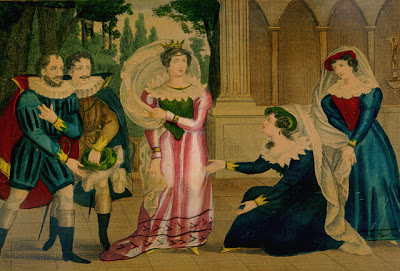Queen Elizabeth I gained a huge attention in Tudor Era because of her dedication towards her nation. She never married in her life, gave her entire life to the nation. A complete era has been named after her, which we know today as Elizabethan Era. Some films and television programs have also been made on her biography time to time.
In the year 1998, a biographical film named “Elizabeth” was released. The plot of the film was written by Michael Hirst, and the film was directed by Shekhar Kapur. Cate Blanchet played the role of Queen Elizabeth and won several awards notably BAFTA and Golden Globe in the year 1998.
The film presents the story of young Elizabeth. Her elder half-sister Mary I dies because of cancerous tumor in her uterus. She leaves Elizabeth as Queen, who was jailed before for a supposed conspiracy to assassinate Mary. But, now she has been freed for her coronation, in the beautiful medieval costume. He is being surrounded by suitors such as Henri Duc d’Anjou – future Henry III of France. Besides, she was urged for marriage by William Cecil, 1st Baron of Burghley. He states that the marriage will secure her throne. But, Elizabeth is secretly involved in an affair with Robert Dudley, 1st Earl of Leicester. But, Cecil tells Elizabeth that there is no private life of a monarch.
Elizabeth has to face a lot of threats to her reign. Some of the conspirators, whom she faces included Duke of Norfolk, her catholic cousin Mary – Queen of Scots, Mary in Guise (mother of Mary, Queen of Scots) and an agent from Scotland. Moreover, she also countenances the plots from Rome by Pope Pius V (Giegud). But, all the threats are put down by her in assistance of her spymaster and adviser Francis Walsingham. Duke of Norfolk is executed for his conspiracy. Besides, Mary of Guise is killed by Francis.
On the other hand, Elizabeth expels Dudley from her life, when she comes to know that he is married. Moreover, she gives up sex as she believes that it makes the men powerful over her. She becomes increasingly tough, which is reflected in one of her speeches also. She also becomes ruthless occasionally, when she orders the execution of those who are the threats for her rule. The entire story of the film depicts her transformation from a romantic girl to a tough queen, who dominates the men around her.
A glance of pre-Elizabethan England can also be witnessed in this film. Burning of Protestants on orders of Queen Mary I and Philip has also been displayed in this movie. Apart from such horrible scene, wonderful Volta dance of Robert Dudley and Elizabeth in stunning medieval clothing can also be enjoyed. This film enlivens the Elizabethan Era perfectly in front of our eyes. The clothes were fabulous weared by elizabeth. Want to more about dressing the http://www.tudordressing.com/ is one of the top site.





